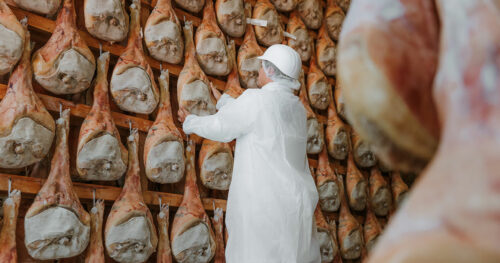To tell you how a Prosciutto di San Daniele can be defined as such we started from the basics. We explained what happens when a pork thigh arrives in our territory and what procedures contribute to define it a Prosciutto and, after the first step, what happens during the pressing and the rest period.
In this third episode of our journey that takes you to discover this gem born in Friuli Venezia Giulia (and only here!), we are going to explain how the washing of our beloved guitar-shaped prosciutti takes place and what maturing consists of.
So, as we said, after our beloved thighs have taken a rest, it’s time for them to get the deserved washing.
The washing
The aging process of the prosciutto thigh is called maturing, before it can be duly offered for sale. It is a variable period, that starts with the end of the rest stage, the so called “cold cycle”. But before the deserved maturing, our dear prosciutti need a nice refresher! The thighs are washed with warm water – in order to get rid of any residues and external agents – and they are then left to dry. This take place in a room where the temperature varies from +15°C to +24°C. In this way a perfect drying is granted.
What is maturing?
And now we really enter into the heart of it: the doors of the maturing lounges open up! At this stage, thanks to specific conditions of temperature and humidity, the so called enzymatic processes are triggered. There processes allow the meat to start taking the characteristic aroma and taste (the one you become intoxicated with as soon as you perceive it!). The prosciutti spend most of their aging time in this department. They in fact go in there during the fourth month since the beginning of the production process and stay there at least until the thirteenth month. The ventilation and aereation which they undergo is totally natural.





